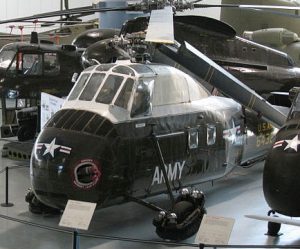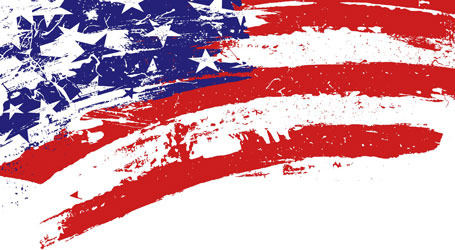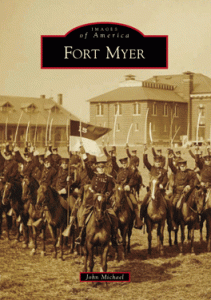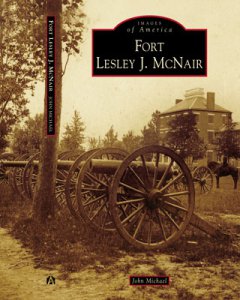The Historic US Army Forts! Part I
Over the past two decades, John Michael has immersed himself in the study of the US military, specifically the US ARMY. Today’s ARMY is a far cry from what was a hundred years ago. As the United States population pushed west, many US Army posts emerged to provide protection and safety to what was once wilderness and danger. John Michael is the author of books that chronicle the history of two of these forts = Fort Myer and Fort Lesley J. McNair. Many other authors have seen the value in documenting and chronicling this unique military history. So without further rambling, here is the first installment of books for your personal library shelf or as gifts for someone special.
Intrigued by the past? Need a great collection of books for your library or kindle? Then there are several selections to choose from
Fort Bridger (Images of America)
by Ephriam D. Dickson III (Author), Mark J. Nelson (Author)
ABOUT THE BOOK:
The history of Fort Bridger represents a microcosm of the development of the American West. Situated in an area initially inhabited by the Shoshone people, Fort Bridger was established during a transitional phase between the fur-trade era and the period of western migration. The fort became one of the most important supply points along the nation’s western trail network. Later, the post served as a bastion of civilization as one of a number of western military posts. Soldiers at the fort protected not only the lives and property of its local citizenry but also the emerging transportation and communication advancements of a nation. Following the Army’s departure, a small settlement emerged at Fort Bridger, using buildings and materials from the old military garrison. Today, the fort and town remain active, in part as a respite for travelers just as it had been more than 150 years ago.
++++++++++++++++++++++++++++++++++++++++++++++++++++++++++++++
Fort Lawton (Images of America)
by Jack W. Jaunal
ABOUT THE BOOK:
Fort Lawton was established to provide protection for the navy yard built at Bremerton in 1891 as well the cities along Puget Sound and the commerce generated by them. The development of Fort Lawton was encouraged by civic leaders in Seattle for economic reasons and to curb lawlessness. Although intended primarily as an infantry post, the first soldiers to arrive on July 26, 1901, were artillerymen. One year later, this artillery installation, the Puget Sound Harbor Defense Command, was moved to Fort Worden and the first infantry soldiers arrived in Fort Lawton. It remained an infantry post throughout most of its years, and Seattle’s hopes for a major military installation were not to be realized.
++++++++++++++++++++++++++++++++++++++++++++++++++++++++++++++
Fort Benning (Images of America)
by Kenneth H. Thomas Jr. (Author), Deputy to the Commanding General Don Sando (Foreword)
ABOUT THE BOOK:
Established outside Columbus, Georgia, in October 1918 by the United States Army as Camp Benning, the base was moved to its permanent location, nine miles south, in June 1919. In 1922, the post was made permanent and was named Fort Benning. Created as the new location of The Infantry School of Arms, Fort Benning became the training post for many of the country’s future leaders, as well as a major part of the military experience for hundreds of thousands of American soldiers.
The post’s current size, more than 180,000 acres, has long made it recognized as one of the largest infantry bases in the world. Named for Gen. Henry L. Benning of Columbus, the installation has had a major impact on the economic and social life of nearby Columbus. Images of America: Fort Benning features vintage photographs and postcards, mostly from 1918 to 1978, showcasing the first 60 years of the base’s 85-year history. Included are scenes of the temporary encampment on Macon Road and the early wooden encampment on the Main Post. The permanent buildup from the late 1920s to the early 1940s is shown in photographs of The Infantry School, the Officers’ Club, Main Post Chapel, Doughboy Stadium, Gowdy Field, the Jump Towers, Lawson Field, the Cuartel Barracks, and the officers’ quarters, as well as Riverside, the Commandant’s Home, formerly the Bussey Plantation. Activities and events include military reviews, visits of presidents, and the National Infantry Museum’s dedication. Generals who served there and are featured include Bradley, Eisenhower, Marshall, and Patton. This centennial edition features a new foreword by Don Sando, deputy to the commanding general.
++++++++++++++++++++++++++++++++++++++++++++++++++++++++++++++
Fort Robinson (Images of America)
by Ephriam D. Dickson III
ABOUT THE BOOK:
Established in northwestern Nebraska in 1874, Fort Robinson served as a military post for nearly 75 years, playing a critical role in the settlement of the West. From here, soldiers marched out to participate in the Great Sioux War of 1876-1877. The famous Oglala leader Crazy Horse was killed at the post. In 1878, Dull Knife’s band of Northern Cheyenne attempted to escape the post, resulting in more than 64 deaths. Troops from Fort Robinson were also sent to the Pine Ridge Agency during the Ghost Dance fervor in 1890, the last of the armed conflicts with the Lakota. The arrival of the railroad at Fort Robinson initiated a new role for the post in the 20th century. Between 1885 and 1907, Fort Robinson was home to the 9th and 10th Cavalry, the famous buffalo soldiers. In 1919, Fort Robinson became a remount depot where horses and mules were purchased and conditioned to be issued to the army. During World War II, Fort Robinson included a German POW internment camp and the site of the army’s largest war dog reception and training center. The fort closed in 1948 and was made a state park in 1972.
++++++++++++++++++++++++++++++++++++++++++++++++++++++++++++++
Fort Carson (Images of America)
by Angela Thaden Hahn (Author), Joseph E. Berg (Author)
ABOUT THE BOOK:
Army scout Kit Carson rode the Southwest in many capacities. He served and retired in Colorado, and so Fort Carson is appropriately named. On land once traversed by Lt. Zebulon Pike, Camp Carson was constructed almost overnight under the watchful eye of Pres. Franklin Roosevelt and with the approval of the neighbors in Colorado Springs. Since its creation, the post has been the home and training grounds for thousands of soldiers who have fought in all wars from World War II to the current war on terror. Fort Carson continues to be a valuable asset to the community economically and in its generosity with resources when a local need arises.
++++++++++++++++++++++++++++++++++++++++++++++++++++++++++++++
Fort Monmouth (Images of America)
by Wendy A. Rejan (Author)
ABOUT THE BOOK:
The U.S. Army established Fort Monmouth in June 1917, just a few months after Congress declared war on Germany. It initially served as a signal training camp for the First and Second Reserve Telegraph Battalions. The first camp, on the grounds of the old Monmouth Park racetrack, was named Camp Little Silver. The army renamed the camp Fort Monmouth in 1925 to honor the brave Americans who died at the Revolutionary War battle of Monmouth Courthouse a few miles away in Freehold. For almost a century, the dedicated military and civilian personnel of the fort have made groundbreaking advances in developing, fielding, and sustaining communications and electronics systems. These breakthroughs have included the development of radar in 1937, bouncing the first electronic signals off of the moon in 1946, and producing the first communications satellite in 1958.
++++++++++++++++++++++++++++++++++++++++++++++++++++++++++++++
Camp Glenn (Images of America)
by Susan Charboneau Holland (Author)
ABOUT THE BOOK:
In 1906, the North Carolina state legislature established Camp Glenn as the permanent summer training camp for the North Carolina National Guard. The camp’s chosen site, located three miles west of Morehead City, was ideally situated on a sandy stretch of a firm, high, and well-drained land overlooking Bogue Sound. A large parade ground adjoined the camp, and it was level as a floor and could accommodate the entire North Carolina National Guard. Although it was first established as a target practice field, in later years, the camp became the first US Coast Guard air station and later a US Navy base. Camp Glenn was the mobilization site for National Guard troops sent to the Mexican border during the 1916 Punitive Expedition against Pancho Villa led by Gen. John J. “Black Jack” Pershing. Citizen soldiers who trained at Camp Glenn also fought in World Wars I and II protecting North Carolina’s coastline and battling for the United States in Europe.
++++++++++++++++++++++++++++++++++++++++++++++++++++++++++++++
Camp Rucker During World War II (AL) (Images of America)
by James L. Noles Jr. (Author)
ABOUT THE BOOK:
The story of Camp Rucker, Alabama, during the Second World War, illustrates the colossal effort of a quiet nation to shake off its peaceful slumber and mobilize for total war. Camp Rucker’s role in that mighty endeavor is told in these pages through vintage photographs from Fort Rucker’s Army Aviation Museum. Select passages from the War Department’s 1944 pamphlet Army Life complement these images to give a unique glimpse at the life of a U.S. Army training camp during World War II and the men and women who trained there. Today, Camp Rucker is known as Fort Rucker and is home to the United States Army Aviation Center. In 1941, however, it was simply a vast acreage of pine trees, scrub oak, and sub-marginal farmland. But following the Japanese attack on Pearl Harbor, the War Department decided to carve out a training camp in this southeastern corner of Alabama. By the spring of 1942, the first freshly mobilized units had entered its gates. In the following three years, Camp Rucker trained thousands of Army soldiers, WACs, and nurses. Many of these young Americans were destined for the battlefields of the Pacific and Europe.
LITTLE KNOWN FACT: ARMY ONE, The Presidential Helicopter was first on mission for the President!

ARMY ONE — THE PRESIDENT’S HELICOPTER
++++++++++++++++++++++++++++++++++++++++++++++++++++++++++++++
Camp Forrest (Images of America)
by Elizabeth Taylor (Author)
ABOUT THE BOOK:
It was a self-sustaining city where over 70,000 soldiers were stationed and approximately 12,000 civilians were employed throughout World War II. In 1942, the camp transitioned to an enemy alien internment camp and was one of the first civilian internment camps in the United States. By the middle of 1943, it had transitioned into a POW camp and housed primarily German and Italian prisoners. After the war ended, the base was decommissioned and dismantled in 1946. In 1951, the area was recommissioned and expanded into the US Air Force’s Arnold Engineering Development Complex. Few remains of this important World War II facility exist today; however, the images within provide a glimpse into the effects and realities of a global war on American soil.
++++++++++++++++++++++++++++++++++++++++++++++++++++++++++++++
Fort Meade: Peacekeeper of the Black Hills (Images of America)
by Roberta Sago (Author), Lee Stroschine (Author)
ABOUT THE BOOK:
The gold rush of 1876 brought many miners to the Black Hills. After the defeat of Lt. Col. George Custer at the Battle of Little Big Horn in June 1876, miners, concerned about attacks from the Lakota, requested protection from the US Army. However, it was not until 1878 that a military fort, Fort Meade, was established in the area for the protection of the settlers in the Black Hills. Fort Meade is located near Bear Butte and present-day Sturgis, South Dakota. From the home of the 7th Cavalry to hosting Civilian Conservation Corps camp during the Depression to housing German prisoners of war during World War II, Fort Meade kept the peace on the Northern Great Plains for 66 years. Fort Meade then transitioned into a Veterans Administration hospital and a regional training institute for the South Dakota National Guard.
++++++++++++++++++++++++++++++++++++++++++++++++++++++++++++++
Historic US Army Forts PART II – !
Click on the link ABOVE for another fine selection of books for your reading pleasure and historical knowledge















Pingback: The Historic US Army Forts! Part II - John Michael Creatives